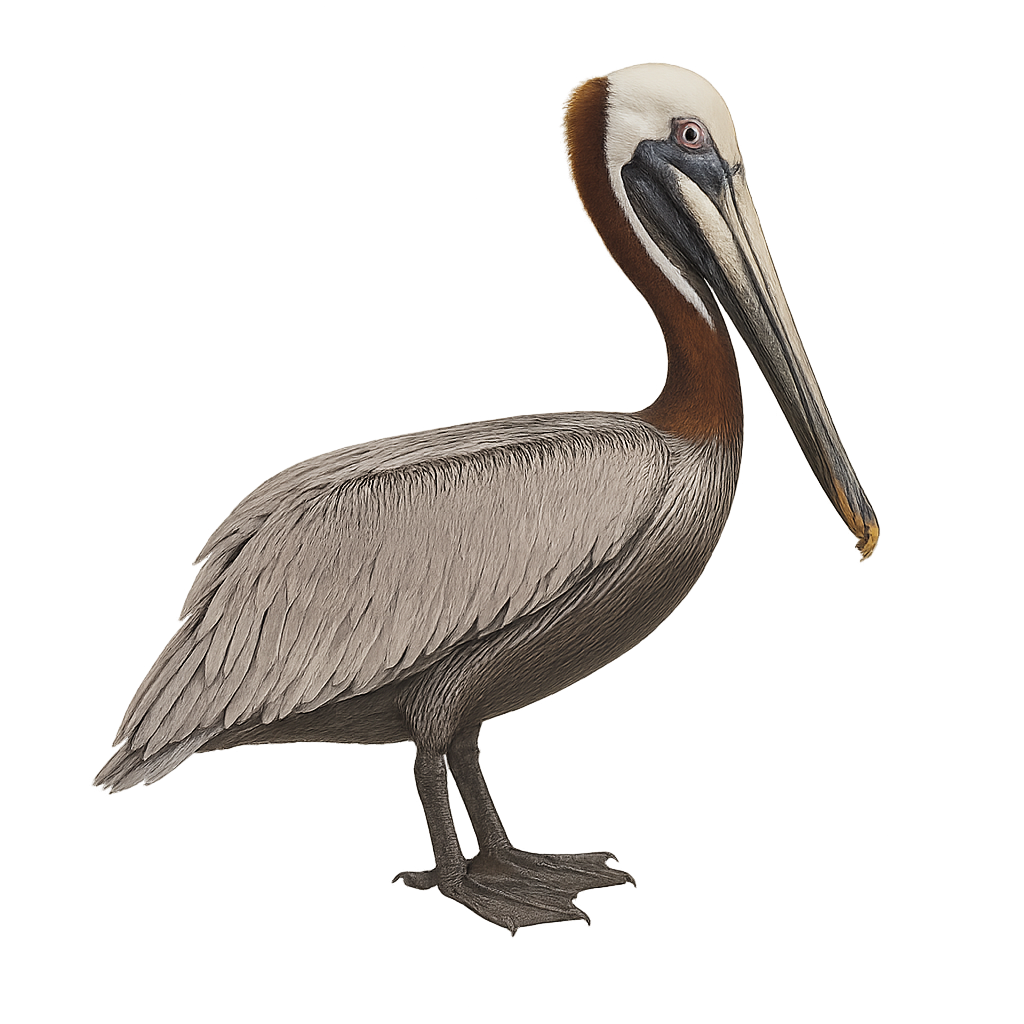Your wildlife photography guide.
Explore the brown pelican in detail, study its behavior, prepare your shots.
Where to observe and photograph the brown pelican in the wild
Learn where and when to spot the brown pelican in the wild, how to identify the species based on distinctive features, and what natural environments it inhabits. The WildlifePhotographer app offers tailored photography tips that reflect the brown pelican’s behavior, helping you capture better wildlife images. Explore the full species profile for key information including description, habitat, active periods, and approach techniques.
Brown Pelican
Scientific name: Pelecanus occidentalis

IUCN Status: Least Concern
Family: PELECANIDAE
Group: Birds
Sensitivity to human approach: Not very shy
Minimum approach distance: 30 m
Courtship display: January to June
Incubation: 28-30 jours
Hatchings: January to July
Habitat:
Coastal areas, estuaries, mangroves, sandy beaches
Activity period :
Primarily active during the day, with peak activity in the morning and late afternoon.
Identification and description:
The Brown Pelican is a large seabird native to the American coasts, measuring between 100 and 137 cm in length with a wingspan of 200 to 228 cm. It is characterized by its brown-gray plumage, white head with a yellowish crown during the breeding season, and a long bill with an expandable throat pouch capable of holding up to 11 liters of water. This pelican is known for its dramatic fishing technique: diving from several meters high to catch fish, mainly sardines and anchovies. It inhabits coastal areas, estuaries, mangroves, and sandy beaches, nesting in colonies on islands or isolated areas. Although currently listed as Least Concern by the IUCN, the Brown Pelican experienced significant declines in the 20th century due to pesticide pollution, particularly DDT. Conservation efforts have led to population recoveries, but habitat degradation remains a concern.
Recommended lens:
300 mm – adjust based on distance, desired framing (portrait or habitat), and approach conditions.
Photography tips:
Use a telephoto lens to capture the Brown Pelican in flight or during its spectacular dives. Opt for early morning or late afternoon light to highlight the details of its plumage. Remain discreet to avoid disturbing its natural behavior.
The WildlifePhotographer App is coming soon!
Be the first to explore the best nature spots, track rutting seasons, log your observations, and observe more wildlife.
Already 1 430 wildlife lovers subscribed worldwide

